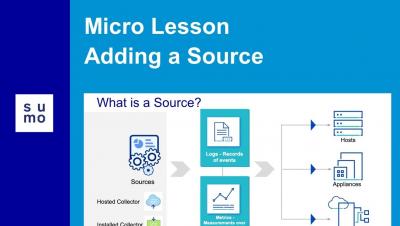Operations | Monitoring | ITSM | DevOps | Cloud
Analytics
Micro Lesson: Adding a Source
Streaming Time Series with Jupyter and InfluxDB
Jupyter Notebooks are wonderful because they provide a way to share code, explanations, and visualizations in the same place. Notebooks add narrative to computation. The cells compartmentalize steps and reduce the fear or hesitation associated with editing code. In this way, notebooks act as an invitation for experimentation. Today, I want to extend that invitation and apply it to InfluxDB. In this post, we’ll learn how to query our system stats data from InfluxDB v2.0 using Flux.
Cyclical Statistical Forecasts and Anomalies - Part III
Remember when you wanted great alerts, so you read our past two blogs about cyclical statistical forecasts and anomalies? Hopefully, the techniques in those blogs gave you some great results. Here we’re going to show you another way of finding anomalies in your data using a slightly different technique.
Quantitative Finance with Splunk: 'Who Correlated My Asset'
Over the past 24 months or so, I have been studying investing/trading while also working to become more proficient with Splunk. I like to combine activities and gain momentum, so I decided stock market and economic data would be the perfect way to dig deeper into Splunk and hopefully improve my investing/trading. In the beginning, I only looked at it as a way to learn more about Splunk while using data that was interesting to me.
A Recap of the Logz io Cloud Observability Platform in 2019
Elastic Stack monitoring with Metricbeat via Logstash or Kafka
In a previous blog post, we introduced a new method of monitoring the Elastic Stack with Metricbeat. Using Metricbeat to externally collect monitoring information about Elastic Stack products improves the reliability of monitoring those products. It also provides flexibility with how the monitoring data may be routed to the Elasticsearch monitoring cluster.
Turning Unstructured Data Into Structured Data With Log Management Tools
What makes data structured or unstructured and how does that affect your logging efforts and information gain? Below we've provided a comparison of structured, semi-structured, and unstructured data. Also below, we discuss ways to turn unstructured data into structured data.
Getting started with Elastic App Search on Elastic Cloud
With Elastic App Search, you can easily add rich, powerful search to your website, applications, or mobile apps. And now you can deploy directly from the Elastic Cloud. App Search is built on top of Elasticsearch, meaning that it’s highly scalable and fast. It comes out of the box with pre-tuned relevance, but gives you plenty of user-friendly options for fine-tuning results to customize the search experience.
Elastic App Search: Now available on Elasticsearch Service
We're excited to announce that Elastic App Search is now generally available on Elasticsearch Service. App Search is a ready-to-use, fully complete search solution with user-friendly relevance tuning and analytics built in. And starting today, you can deploy App Search instances with the click of a button right from the Elasticsearch Service dashboard. Now you can get all the tooling needed for a powerfully relevant search experience with the operational flexibility and scale of Elastic Cloud.










